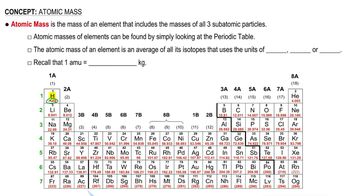Here are the essential concepts you must grasp in order to answer the question correctly.
Mass Spectrometry
Mass spectrometry is an analytical technique used to measure the mass-to-charge ratio of ions. In this process, molecules are ionized, accelerated, and then separated based on their mass. The resulting data provides information about the molecular weight and structure of the compounds present in a sample.
Recommended video:
Ionization
Ionization is the process of converting neutral molecules into charged ions, which is essential for mass spectrometry. Since the mass spectrometer operates on the principle of manipulating charged particles, neutral molecules cannot be detected or analyzed. Common ionization methods include electron impact and electrospray ionization, which facilitate the formation of ions from the sample.
Recommended video:
Path of Ions in a Mass Spectrometer
Once ionized, the charged particles are accelerated by an electric field and directed into a mass analyzer. The path of these ions is influenced by their mass and charge, allowing for their separation. After separation, ions are detected, and their abundance is measured, providing a spectrum that reveals the composition of the original sample.
Recommended video:
 Verified step by step guidance
Verified step by step guidance

